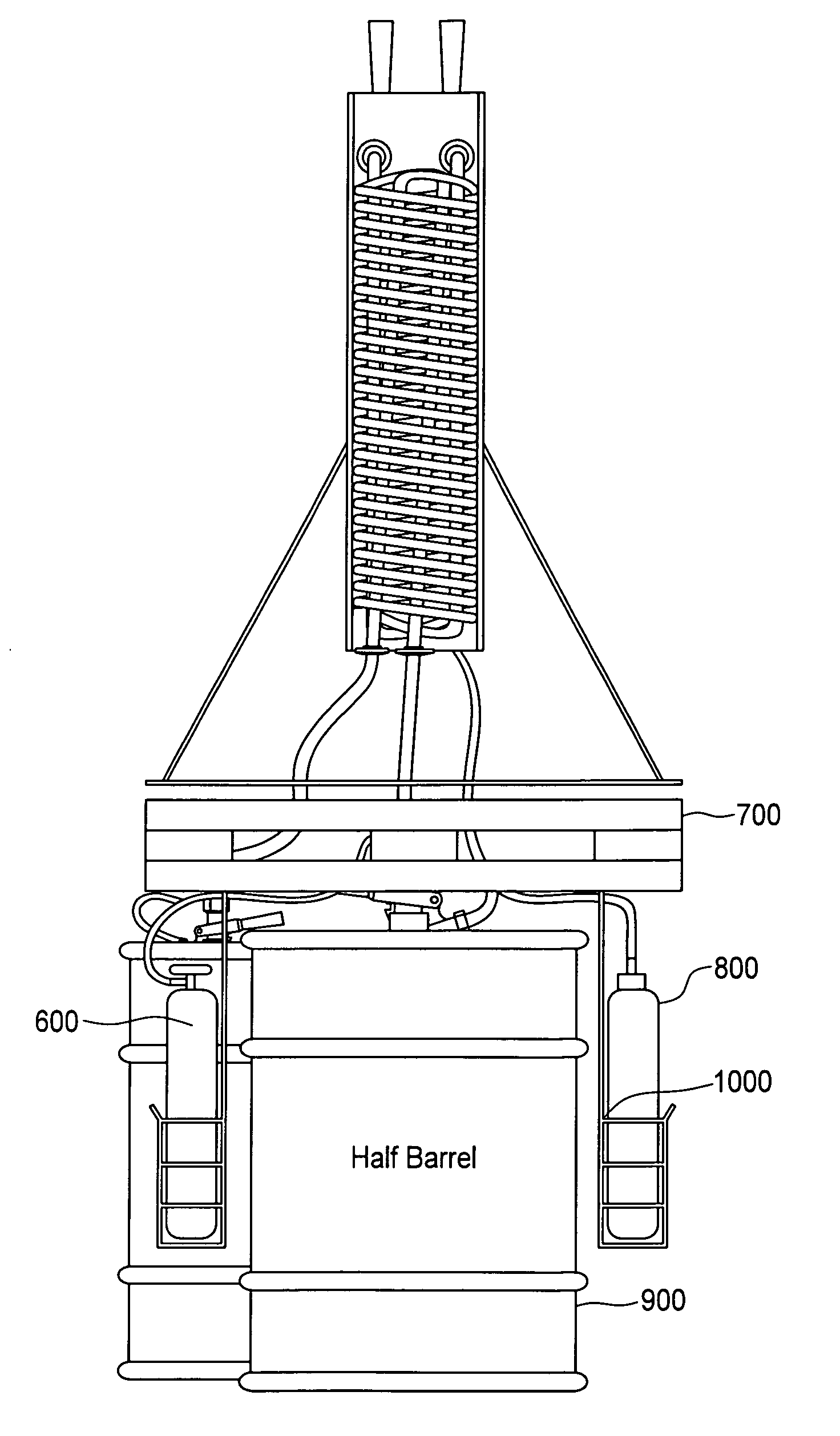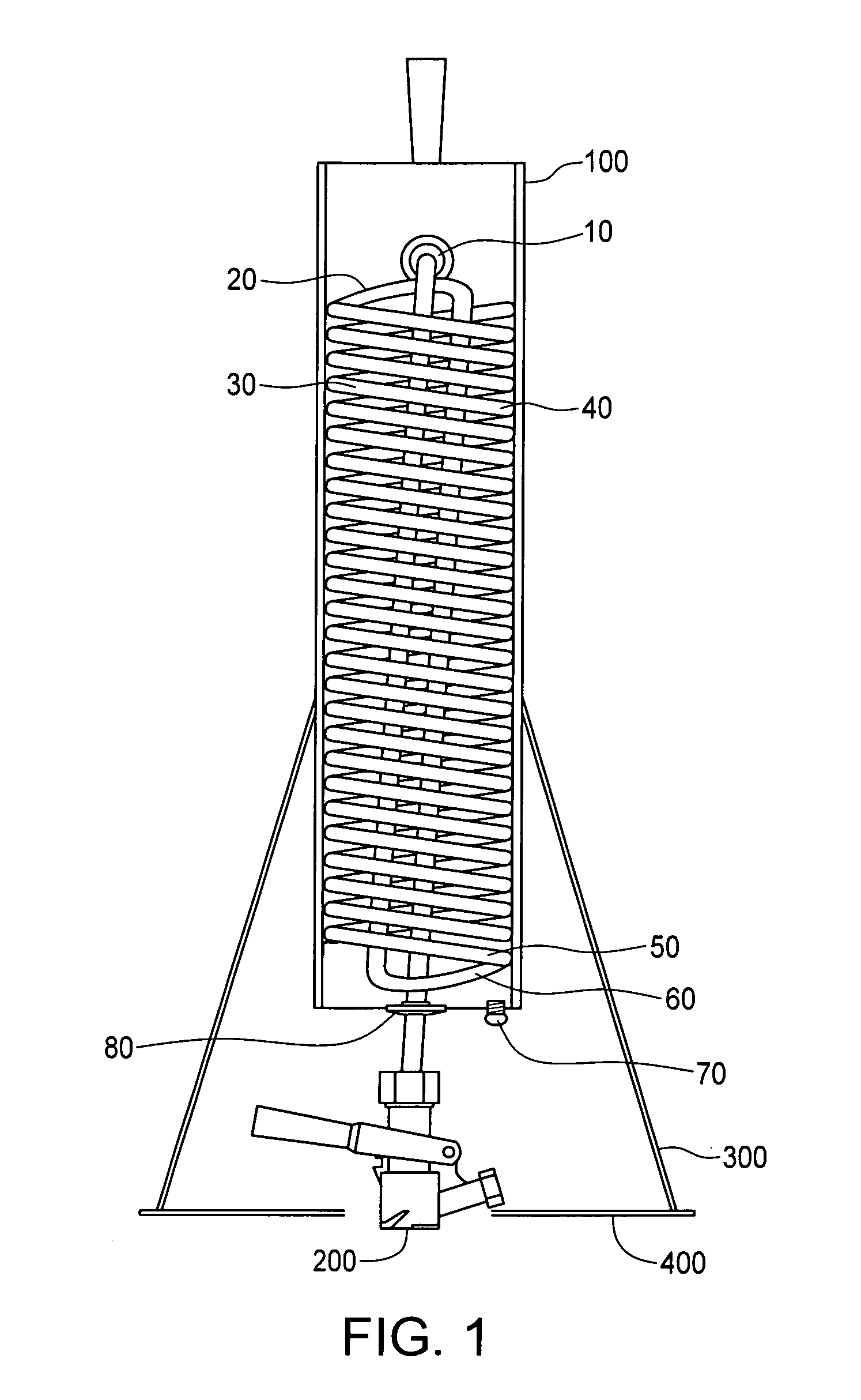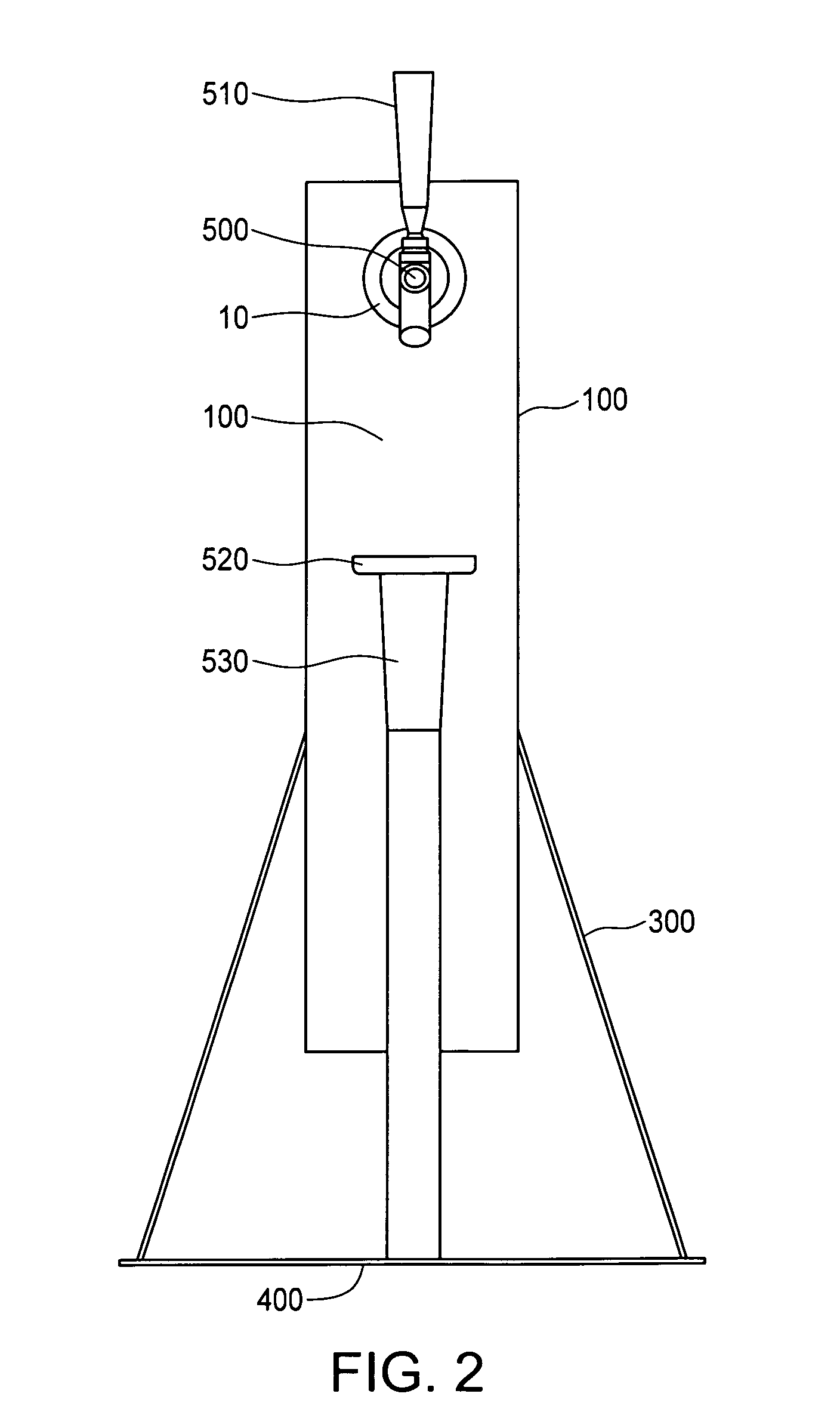While such commercial systems advantageously use CO2 dispensing systems to prevent air from contacting the beer in the keg to keep the beer fresh for a longer period, such systems are expensive, large, heavy, energy-intensive, not easily transported, set up or broken down, and can be awkward and cumbersome to implement.
It is not practical or suitable to utilize this first type of beer dispensing system for temporary events or social gatherings.
Conventional
consumer systems do not keep the beer in the keg fresh because
oxygen in the air can quickly flatten the beer.
Heavy pressure bottles of compressed CO2 gas, such as those used in the commercial systems to keep beer fresh for a longer period of time, are not easily adapted to such
consumer systems.
Furthermore, the beer keg associated with these
consumer systems often inconveniently and inefficiently requires that the entire keg be chilled or iced down before and during the dispensing of beer.
Problematically, however, the beer lines attached to the keg are often outside of these cooling containers such that the beer in these lines is subject to undesirable warming.
External beer lines attached to kegs in cooling containers also present a safety
hazard as they can fall off and / or become disconnected when people step on, kick, and / or trip over the external beer lines as they travel to, from, and around the keg.
The cooling containers themselves are large, often unattractive, and typically sit on the ground or on a table.
Furthermore, cooling containers can become very heavy when full and often inconveniently involve the need to dump out large amounts of water and ice during and / or after use.
A typical jockey
box set up is a space consuming arrangement of separate parts.
If the cooler rests on the ground, then the beer dispensing faucet(s) will be approximately 8 inches to 1 inch from the ground, thus frustrating access to the beer faucet and requiring that the user bend over almost completely to the ground to pour beer.
The set up and break down of a jockey box requires great effort and is undesirably laborious.
For example, due to the amount of space required to
mount the jockey box arrangement and size of its several parts, transportation of such a device requires a
truck or a car with plenty of back seat and / or
trunk space.
While it is possible to use a hand
truck or dolly to transport the other box components (in addition to the keg or kegs), such as the cooler, table, or CO2 tank, etc., doing so is not recommended because the unbalanced nature of the hand
truck or dolly will result in the parts being unbalanced and unsecured and could result in broken faucets or, falling or crushing hazards or, if the CO2
regulator is damaged or broken off, can result in a dangerous
projectile that can result in serious injury or death.
Due to the many separate, large, heavy and / or cumbersome parts involved in setting up a jockey box, several
time consuming, tiring, inconvenient, and possibly unsafe trips between the transport vehicle used to deliver the jockey box to
a site and any set up location removed from the transport vehicle, such as a field, park, event space, etc., are required.
These beer and CO2 lines create unsafe
tripping hazards and, because they are out in the open, often obtains abrasions and holes resulting in leaking beer and ultimately a foamy pour and messy beer serving area.
Furthermore, beer contained in the beer lines is exposed to potentially higher temperatures which can disadvantageously result in warm beer.
Use of bronco pumps results in wasted and un-drinkable beer.
Bronco pumps are also labor intensive and difficult to use.
Bronco pumps often dispense flat unsavory beer due to the introduction of regular air into the keg.
When regular air is pumped into the keg, it immediately begins to reduce the
carbonation in the beer degrading its quality, and typically causes the beer to go flat within about 24 hours.
If only a portion of the keg is consumed, any remaining beer, once it has gone flat, is discarded, resulting in unnecessary waste.
Kegerators, however, are very expensive, cumbersome, require a power source, and not easily transportable for use at temporary events and functions.
 Login to View More
Login to View More  Login to View More
Login to View More 


